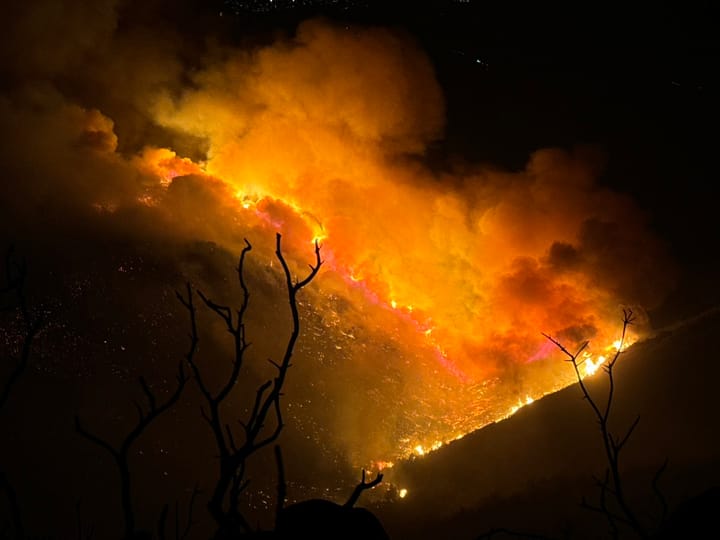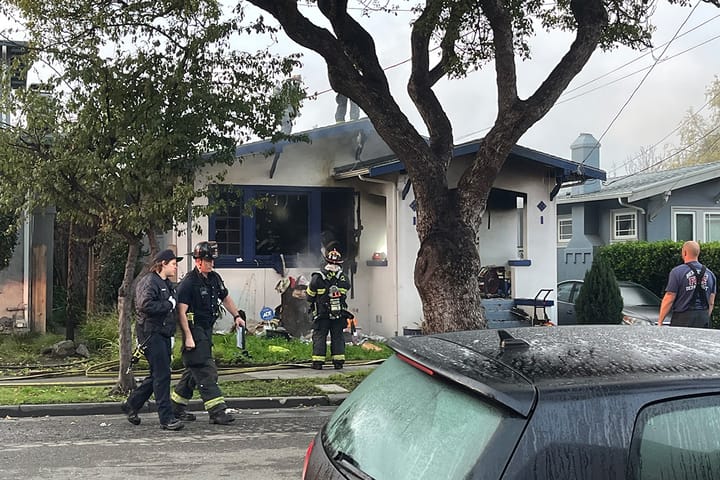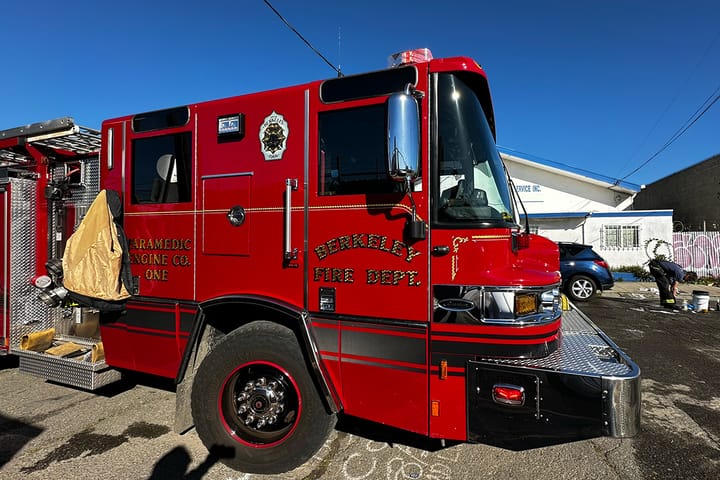Berkeley fire safety regs bring anxiety — and chainsaws
Some have said they feel pressured to do expensive, seemingly futile, work on their properties. Others say it's all hands on deck.
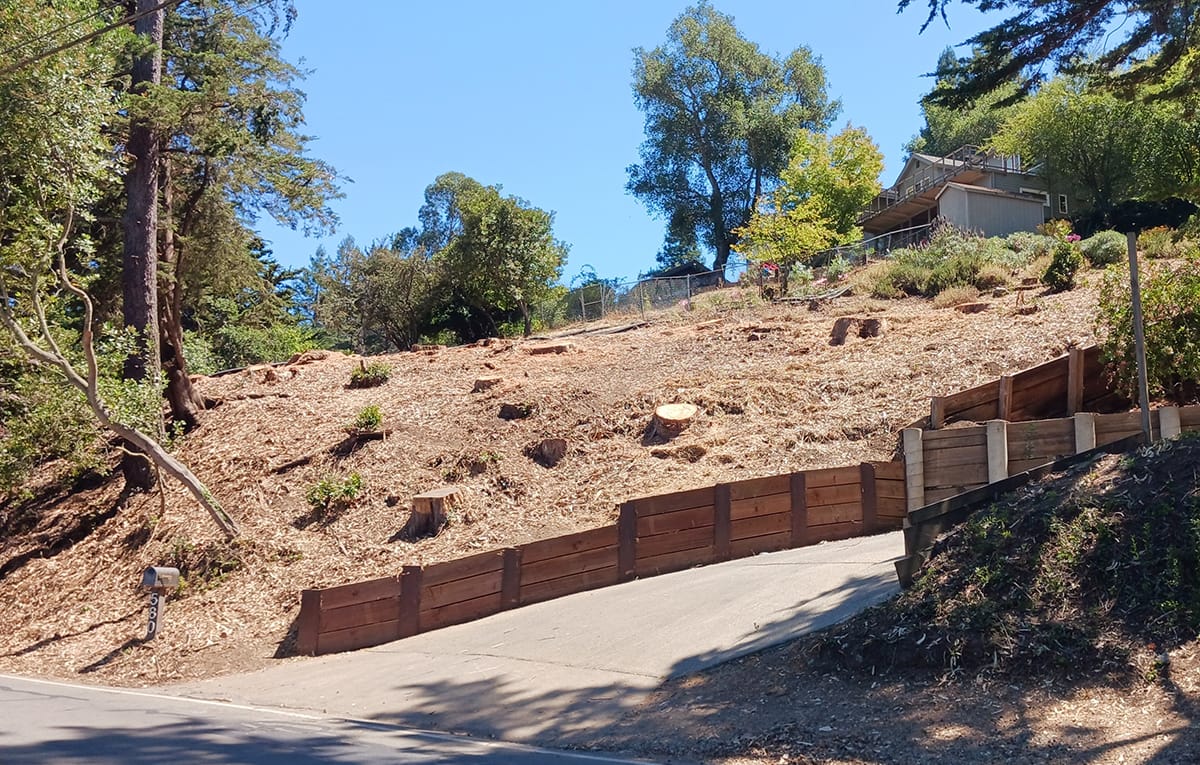
By Steve Taylor
It took days of sawing, chipping and hauling to remove several old eucalyptus trees on Queens Road, high in the Berkeley Hills.
The air rang with the roar of machinery and workers' calls as an era ended.
Some eucs were 100 feet tall and had grown there longer than my own 36 years in the neighborhood.
The fragrant old eucs had offered lofty perches for jays, crows, doves and hawks, and even survived a fire that nearly destroyed the house beneath them.
And, while they hadn't exploded into ember-spewing torches that, as many feared, would turn hillside homes into smoldering ruins, their time had come. Nearby, more eucs are already slated for removal.
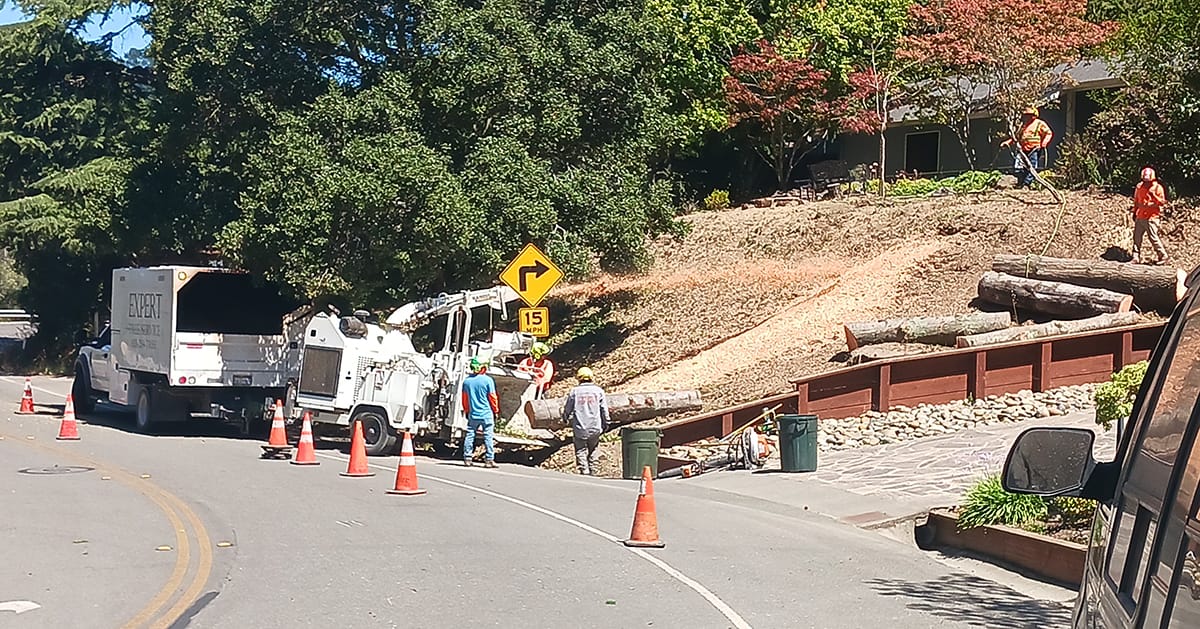
This year, the hills are facing a new, stricter round of safety inspections by the Berkeley Fire Department in advance of fire season, which normally peaks in autumn.
News coverage so far has largely focused on guidance from our firefighting leadership. Now, Berkeleyans are finding there's more to the story.
Some homeowners have said they feel pressured to do expensive — seemingly futile — work on their properties at the behest of a new Measure FF-funded effort whose leaders, though no doubt sincere, can be alarming in their messaging.
A prime example is a flyer sent by BFD earlier this year stating that all tree canopies must be at least 10 feet from one another.
Meeting that requirement could mean removing most trees in the hills, or pruning them to the point of imbalance. The flyer says the requirements apply "100’ from any structure, including structures on neighboring parcels."
Were homeowners expected to denude the hills of their trees that provide oxygen, bird habitat, shade, solace and other benefits? The answer, for now at least, is no.
BFD inspectors, most of whom are young paid interns hoping for careers in public service, aren't issuing violations for trees closer than 10 feet from one other just yet.
On a Zoom seminar in June, a BFD official said trees are fine "as long as you can see light through the branches."
That should be welcome news to hills homeowners feeling pressed by rising costs of home maintenance. The fee for removing a mature tree has reached the $7,000 to $12,000 range.
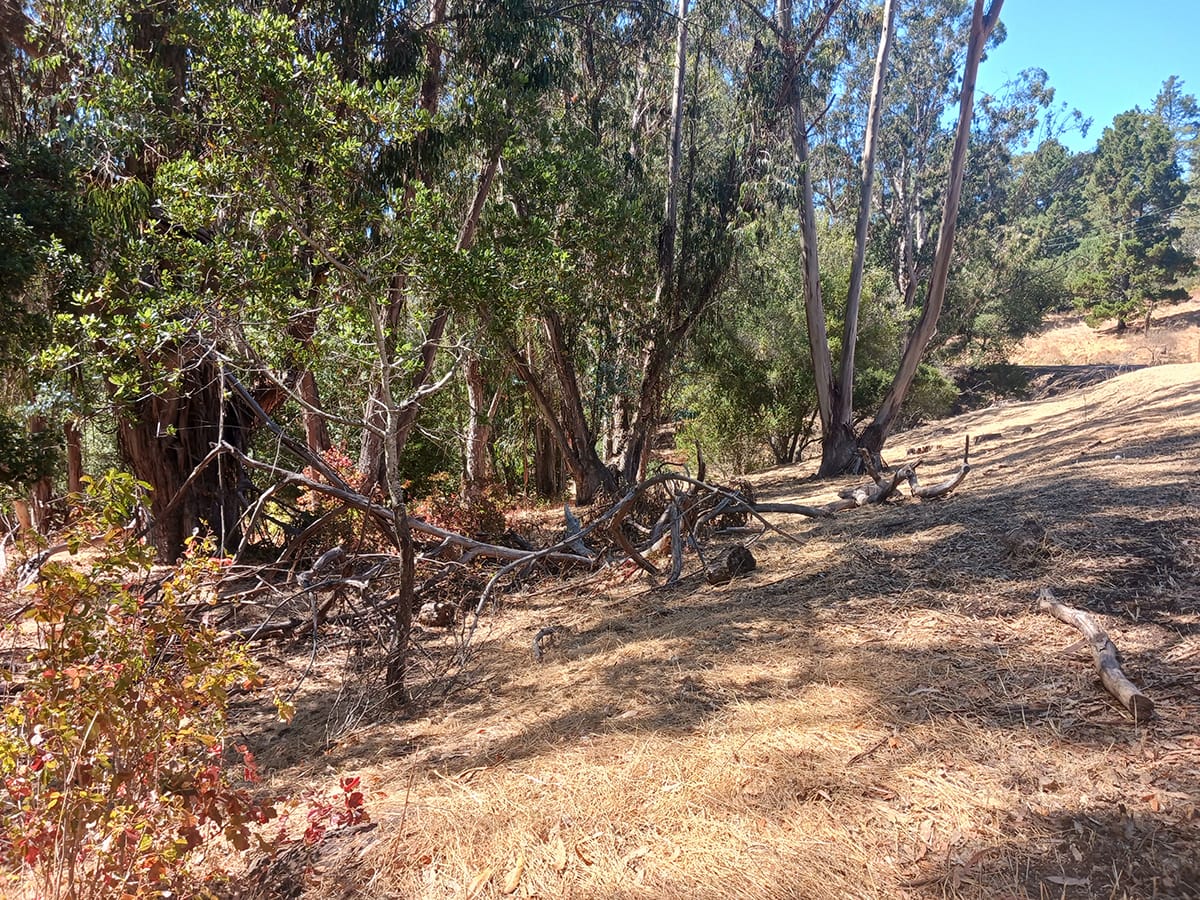
Berkeley's new fire inspection reports — besides listing violations that must be corrected in 60 days under threat of possible fines, citations and even property liens — also give "recommendations."
One hills resident describes recommendations she received: modifying or removing "wood decks, shingles, wooden front doors, wooden entryways, and wooden railings that lead to our front door, etc. … which would cost us many hundreds of thousands of dollars."
The counter argument to the "home-hardening" campaign now sweeping the Bay Area and beyond seems well-summarized by Kensington hills poet Curtis Faville, who writes on Nextdoor.com:
"It's unreasonable to suppose a neighborhood can make itself safe by tearing out all the wood structures. In a wild fire like that which took place in Oakland, the wind made 'defensible space' a joke; flames were jumping from structure to structure. What's needed is a recognition of the ambient ecosystems our communities abut: Tilden is filled with dry vegetation ... but nothing is done to remedy that. Berkeley's aggressive 'fire suppression' is just public relations, without addressing the root causes of fire in this region, and making homeowners foot the bill."
Tilden park: The fuel next door
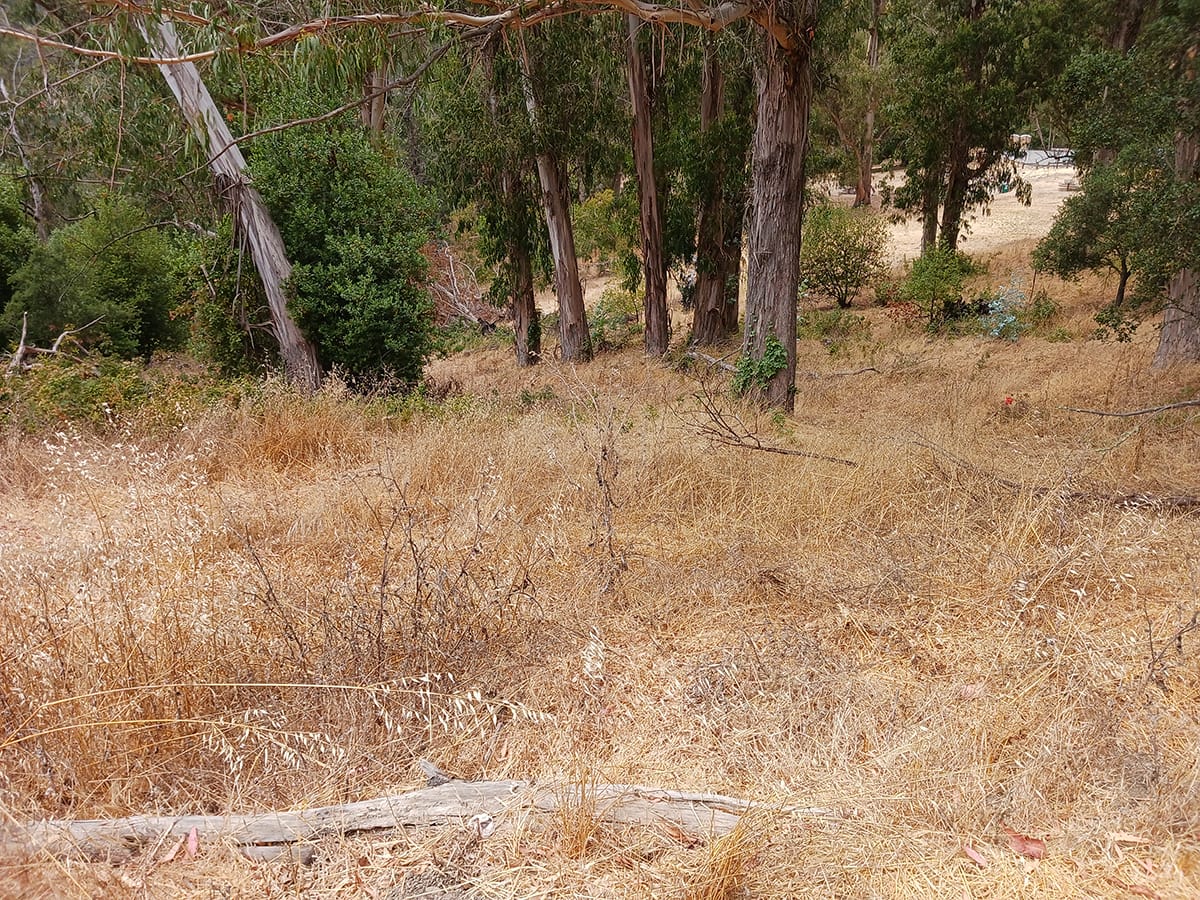
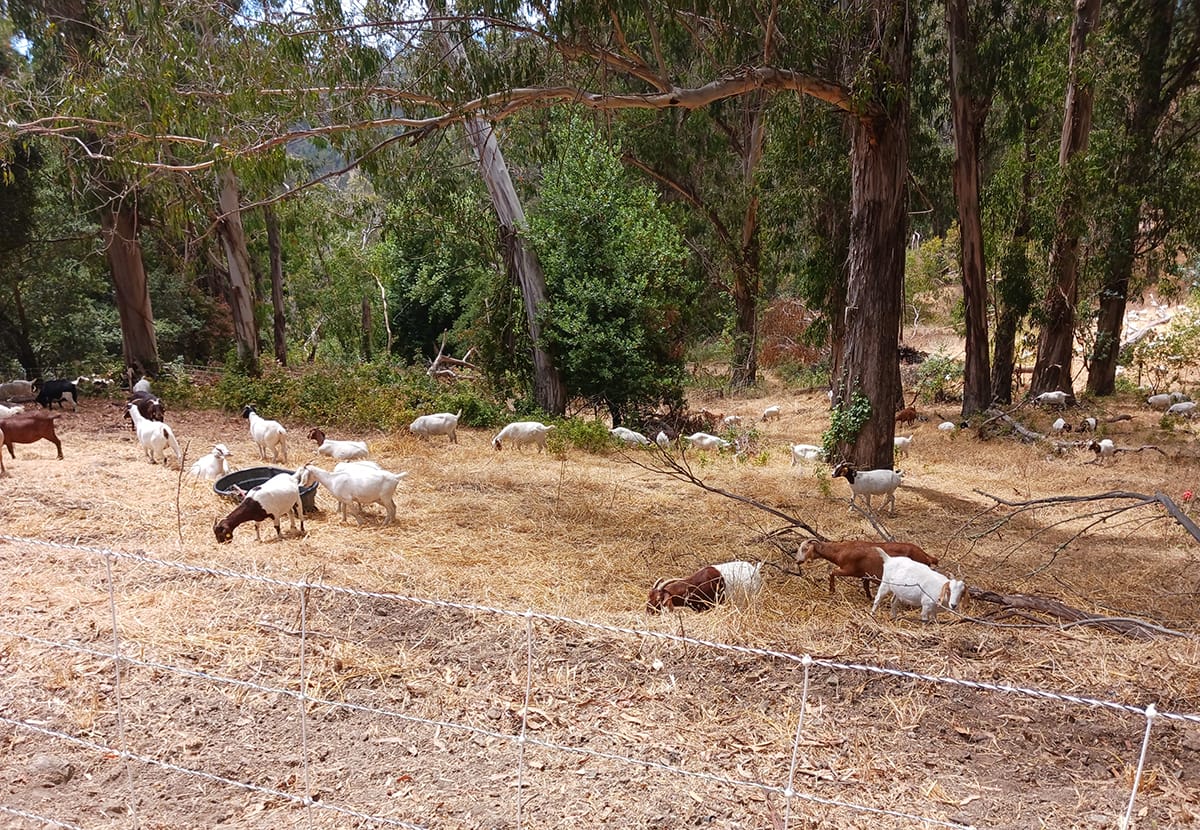
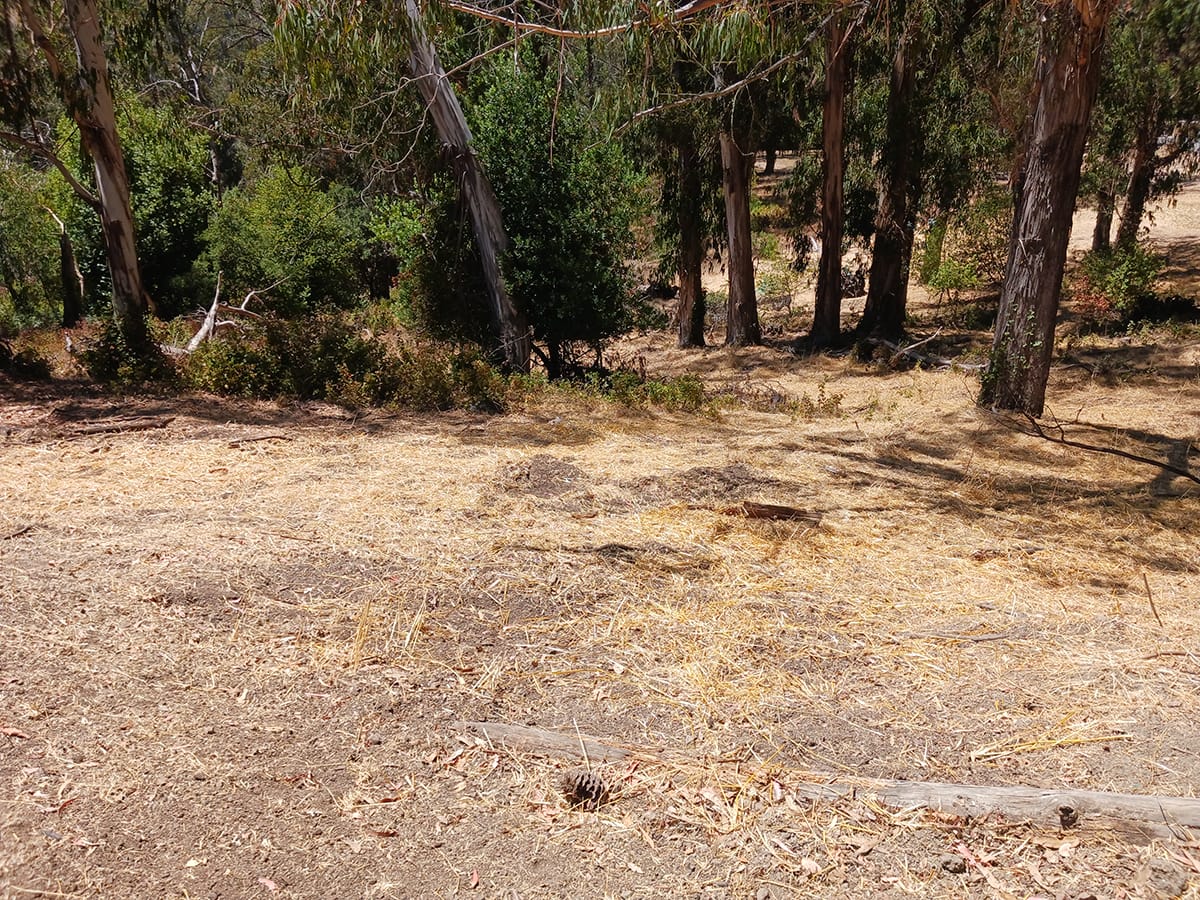
Wildcat Canyon Road: Before and after the goats feast. Steve Taylor
Tilden Regional Park is home to a massive fuel load of dead trees, shrubs and grass.
Take a trip down scenic Wildcat Canyon Road, where Berkeley homes sit two lanes away from parkland.
Dead and dying trees can be seen around every curve on the park side. Fortunately, the famous weed-eating goats have been brought in again this year — in greater numbers than before — to feast on the dry grass and underbrush that would be the starting point of a firestorm.
Asked about Tilden's fuel load at June's Fire Safety Town Hall (organized annually by Councilwoman Susan Wengraf), Berkeley Fire Chief David Sprague said he was in touch with East Bay parks firefighters but did not want to speak for them.
"I'm aware that they have of course a large region to take care of and perform mitigation in, but they have done a substantial amount of work in the perimeter of the park," he said. "They have plans to do more."
Countering fears that a firestorm could overwhelm his crews' abilities, Chief Sprague added, "I know that for decades we've said the mega-fires are unstoppable — and now that we have the ability to analyze mitigation efforts on a parcel-by-parcel basis, we're beginning to understand that there's actually a lot of work we could do to make those fires more controllable than we thought."
Berkeley Councilwoman Susan Wengraf holds a fire safety town hall each year.
Fire-hardened homes in defensible spaces could slow the spread of a wildfire, Sprague said, by buying time for firefighters to extinguish spot-fires and deploy more resources.
"Each additional minute is time that allows additional resources, like mutual aid from other fire departments, aircraft like firefighting helicopters and air tankers, and regional resources from around the bay, and state, to arrive and support the effort," said Colin Arnold, interim assistant chief of BFD's wildland division.
How dangerous are the trees, really?
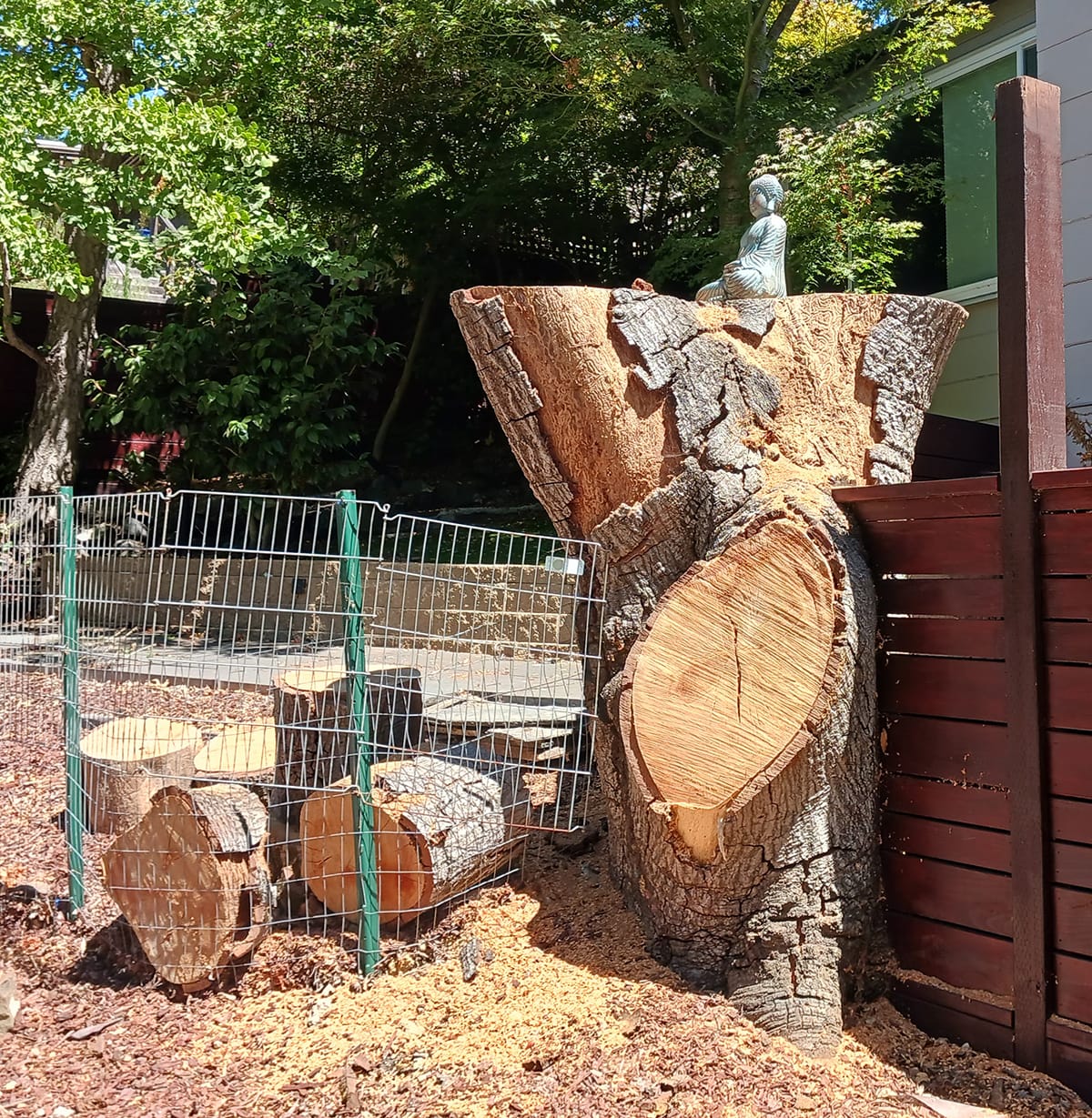
Berkeley is passionate about its trees, as anyone who recalls the 21-month protest over Cal's plans to remove an oak grove prior to building its new athletics center.
Despite a foot injury, Country Joe McDonald even performed a tribute to Woody Guthrie to raise money for the protest.
"When the first invasive species (aka white colonists) arrived here about 175 years ago, wildfire was a big worry. That worry has increased exponentially in recent years, due to human-caused climate change," notes award-winning Berkeley Hills author Kathleen Zoehfeld. "Now, some people are recommending cutting down massive amounts of vegetation to reduce wildfire danger. However, when we remove trees, we remove the shade and the conservation-of-moisture they provide, forcing us to resort to more air conditioning when temperatures rise."
She continued: "Meanwhile, those cut-down trees, bushes, and shrubs that have been growing in this difficult environment for decades, absorbing carbon dioxide for us, decompose, or worse, are burned, releasing their stored carbon, further fueling climate change. The Berkeley Fire Department is excellent, they provided great practical advice last year, and I’m sure they will again this year. But we need to put the brakes on the delusional idea that massive clear cutting will solve our fire problem and instead focus on everything we can do to reduce our greenhouse gas emissions."
Berkeley's government does recognize the benefits of arboreal canopies and has launched a program to plant more trees in West Berkeley.
Gordon Wozniak, a former City Council member who is now a parks commissioner, told officials: "It’s important that we ramp up tree planting, because the tree canopy in Berkeley varies dramatically from 40% in some places in the hills to very little in some of the flatlands, and tree canopy is another thing that is very important to people who live in the various areas, and it helps urban cooling during climate change."
It also seems worth noting that disturbing an active bird nest is prohibited by federal and state laws. (Many species nest between March 1 and Aug. 31, while several species nest outside that time frame, including some herons and egrets, many raptors and most hummingbirds, according to Berkeley's Golden Gate Bird Alliance.)
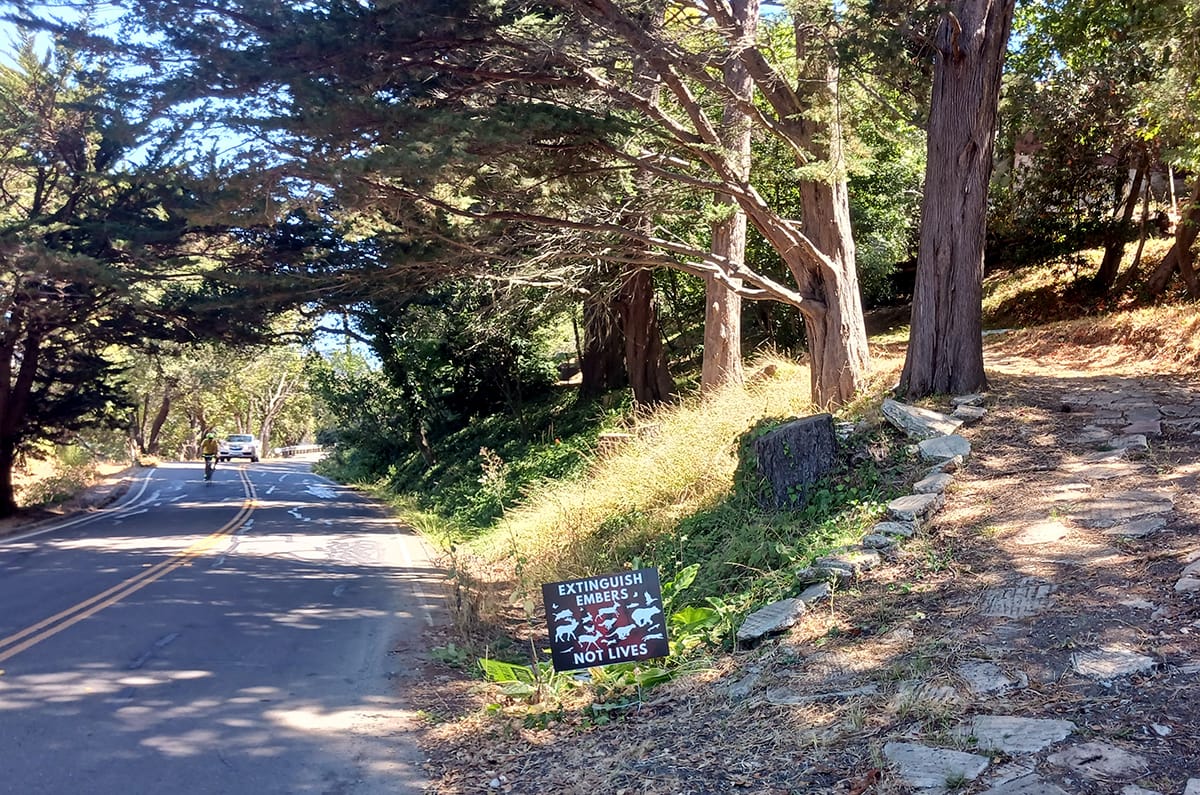
Trees aren't the root problem, says one survivor of the 1991 Oakland-Berkeley hills firestorm, who's also lived through a forest fire in Truckee and urban grass/scrub-brush fires in Nevada.
Fire starts on the ground, she said, and trees are generally quite fire-resistant as long as flames are extinguished early.
"We can clear-cut every tree and we’re still going have terrific losses during a fire if all we have left is grass and scrub brush," she said. "And then we'll have massive mudslides because we took out the tree root systems, which are critical in stabilizing the soil in the hills — this was a big problem in the aftermath of a number of big fires."
She does recommend reducing the number of trees and limbing-up those that remain, however.
Besides the benefits already mentioned above, trees can also block the winds that turn small blazes into firestorms, the survivor added.
In the decades this reporter has lived in the hills' Terrace View neighborhood, three houses have caught fire, two burning to the ground.
All three were surrounded or adjacent to groves of redwood or eucalyptus. Flames reached high into the branches, but none caught fire. Winds were light.
"The challenge is to keep fire on the ground and out of the crowns, or leafy overhead canopy," says BFD's Colin Arnold. "Ground fire travels more slowly and can be, occasionally, fought directly, But fire in the crowns moves quickly and is very difficult to manage."
Steps to a fire-resistant hillside
Despite the inconvenience and cost, many trees are being removed.
"We who live on the hillside are now under extreme fire danger, and it makes total sense for the city to take what is so far a few small steps towards making the hillside more fire-resistant," writes hills resident Michel Thouati on Nextdoor. "In the past few weeks only, I took down a juniper, radically reduced a Hollywood juniper, and took out three large Liquidambars."
Thouati recalled the horrors of the Oakland-Berkeley hills firestorm: "It was overwhelming to see this fire, that nothing seemed to be able to control. We now live in one of the highest fire-danger areas in California (I hear we are in the top 10, according to the fire inspector who inspected my house this year). All of us should do all we can do to reduce this risk. A few trees in our yards are very little cost."
As often happens on social media, those comments sparked a rejoinder, this time from Curtis Faville of Kensington.
"'Extreme fire danger' is an exaggeration," Faville wrote. "The Oakland fire was the result of a very rare combination of weather factors, combined with poor fire/disaster response. It was a 100-year recurrence, at least."
Faville continued: "Once a 'firestorm' starts on the ridge, NO AMOUNT OF 'HARDENING' OF LANDSCAPING on our separate properties will make us any safer. With high winds, fires 'jump' or stream across whole blocks. Berkeley’s attempts to 'prevent' fire risk by threatening homeowners are window dressing."
So, as the hills face unknowns fueled by climate change, some homeowners say stricter demands — enforced by inspections, potential fines, citations and property liens — go too far.
Others say strong measures are necessary.
As one longtime hill dweller said, "We must do all we can, feasibly, to minimize the chances of a repeat of the firestorm that burst out of Tilden and burned its way to Shattuck Avenue more than 100 years ago."
Steve Taylor, former paper boy for the Berkeley Daily Gazette, studied journalism at Columbia University and interned at UPI's New York city desk. He's reported for The Daily Californian, Imperial Valley Press and Napa Register, and freelanced for UPI, the AP, the SF Chronicle, the SF Examiner and Rolling Stone.


